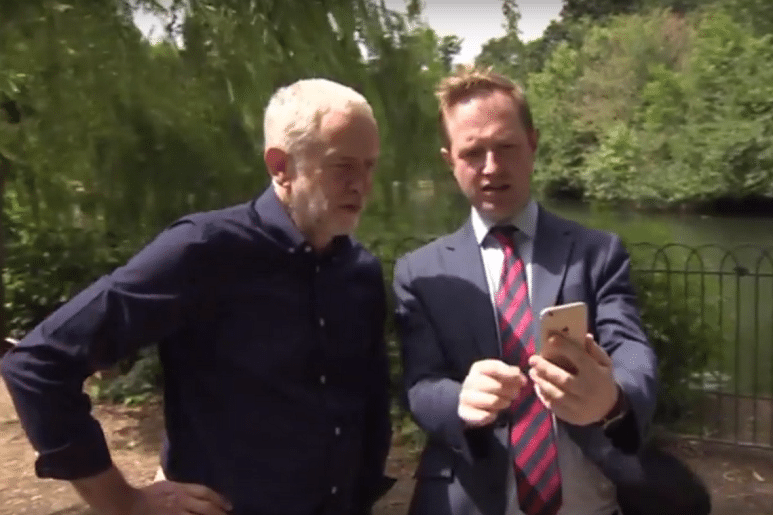While Jeremy Corbyn and his supporters have been trying to move the Labour party leftwards in the UK, Bernie Sanders and his supporters have been doing the same with the Democratic party in the USA. But because the two countries and parties have different political contexts and histories, Sanders has just accepted what could be considered a very honourable defeat.
Sanders, who in a number of aspects could be seen as the USA’s Corbyn, has captured the imagination of citizens on the US left who have justifiably found it hard to root for either of the country’s two main parties in recent decades. But his challenger for Democratic nominee in the US presidential elections later this year, the establishment figure of Hillary Clinton, simply proved too powerful for Sanders to beat, with overwhelming support from wealthy Democrats and mainstream media outlets tipping the vote in her favour.
Considering that converting ‘superdelegate’ party insiders to his cause was always going to be a big push, Sanders did indeed lose the nomination. And although he did incredibly well in the contest – much better than many establishment figures ever thought a self-proclaimed democratic socialist could, he was going to have to concede victory to Clinton at some point. And he did just that on 12 July, when he officially endorsed Clinton for president.
Why Sanders conceded in three simple points
Sanders told a Clinton rally in New Hampshire:
She will be the Democratic nominee for president and I intend to do everything I can to make certain she will be the next president of the United States
But why did he choose to endorse Clinton after criticising her fervently throughout the campaign?
- Trump. Clinton’s campaign has been plagued by controversies and inconsistencies, including intense criticism for taking big business money to fund her campaign and avoiding calls to release transcripts from speeches she gave to banking, corporate and financial services (from which she pocketed hundreds of thousands of dollars). However, the effective coronation of Republican nominee and fascist billionaire Donald Trump has made Clinton the lesser of two evils. Sanders in particular knows that Clinton would never drop out of the race and he recognises the massive dangers that would come from dividing the anti-Trump vote by running as an independent candidate. Emailing his supporters, he said that defeating Trump and electing Clinton was the best option under the circumstances, making this very clear when he insisted: “There is no doubt that the election of Donald Trump as president would be a devastating blow to all that we are fighting for… I cannot in good conscience let that happen”.
- Concessions. Sanders previously promised to take his fight right to the Democratic Convention – where the presidential nominee is officially announced – if the party establishment didn’t change its longstanding commitment to pro-corporate trade deals like the TPP. He was always more of an ‘issues man’ than a traditional power-hungry politician, and part of his endorsement of Clinton was down to the concessions made to him and his supporters by Democratic policy makers. Thanks to Sanders’ efforts, for example, the party’s platform now promises to expand access to health care and eliminate college tuition for working families. Clinton has now also called for a $15 minimum wage, for climate change to be tackled, for the death penalty to be abolished, for large financial institutions on Wall Street to be broken up, and for the USA’s campaign finance system to be reformed. And importantly, she’s reaffirmed her stated opposition to the TPP. Sanders fought hard for all these policies, and Clinton was clearly pushed to make concessions in order to get Sanders and his supporters off her back.
- The fight continues. Sanders’ endorsement of Clinton was a pragmatic decision rather than an abandonment of his political cause or capitulation to the powers that be. In his email to supporters, he said the fight represented by his campaign would be harnessed in coming weeks by successor organisations, and he asked them to sign a pledge to “continue the political revolution”. While a Clinton presidency would keep Trump out of power, he insisted that: “Our goal will be to advance the progressive agenda that we believe in and to elect like-minded candidates at the federal, state and local levels who are committed to accomplishing our goals… And I am planning to be in every corner of this country to make certain that happens”. In other words, he has no plans of fading into obscurity and taking with him the ideas that have inspired millions of citizens throughout the US.
In short, Sanders has been pragmatic. He’s pushed as far as he thought he could within a political system rigged by corporate money to keep one of two right-wing parties in power. While he and his supporters came very close to taking over the Democratic party in a similar way to how Corbyn became Labour leader in the UK, he eventually recognised that Clinton had obtained more votes and that the large movement of ‘independents’ backing him had not been prepared enough to win him the nomination.
It’s absolutely tragic whenever citizens in a so-called democracy feel like they have to vote for the ‘lesser of two evils’, but Sanders is right about one thing. At the very least, he and his supporters have achieved, “by far, the most progressive platform in the history of the Democratic Party”. While that may only be a small step forward, it’s clearly a move in the right direction in a country that has been dominated by right-wing politics for decades. And if Sanders supporters keep fighting for their ‘political revolution’, there may well be many more steps forward in the months and years to come.
See more analysis of the issues in this video from The Young Turks (TYT):
Get involved!
See other Canary articles about Hillary Clinton and Bernie Sanders.
Featured image via DonkeyHotey





















